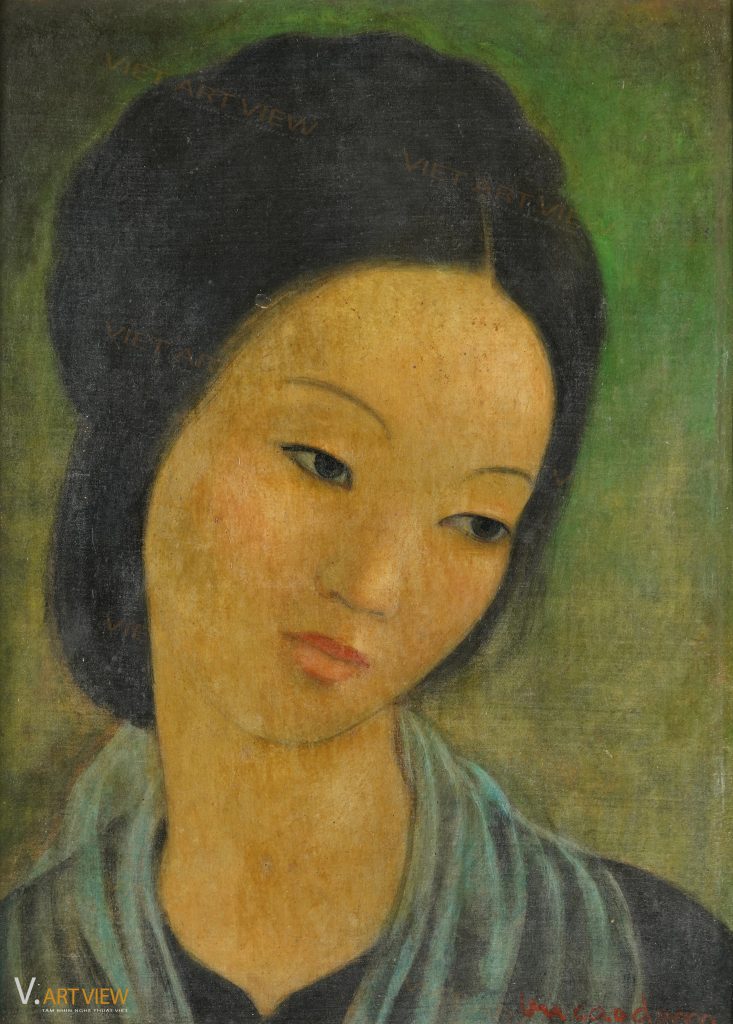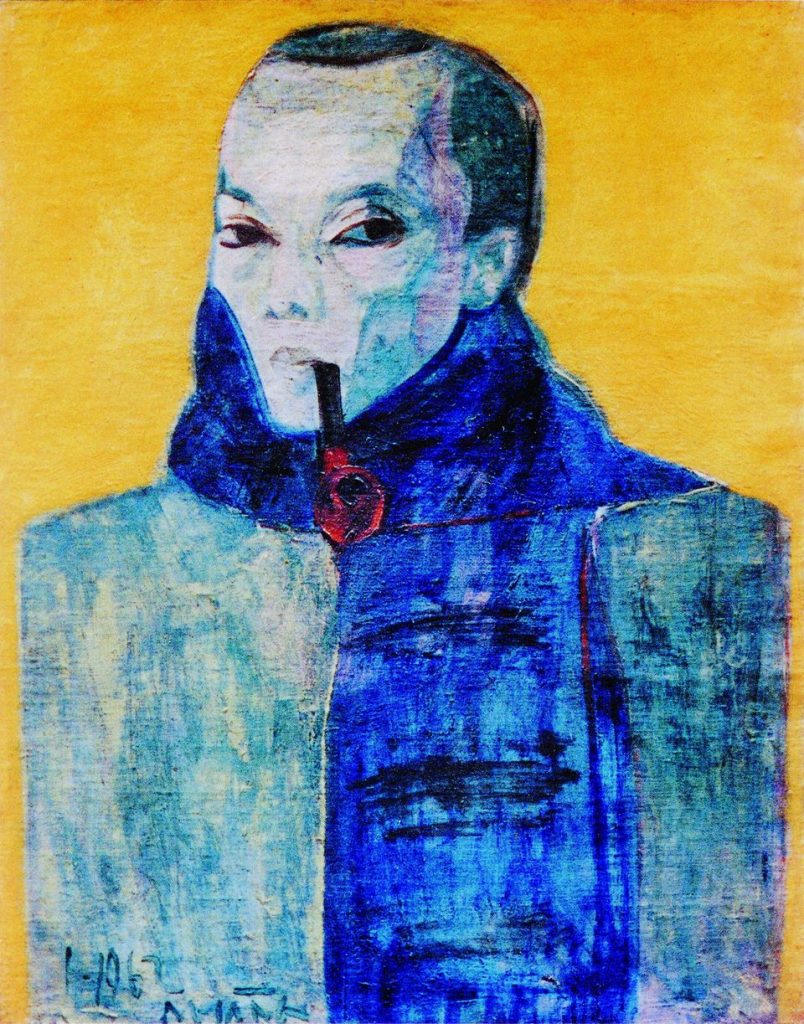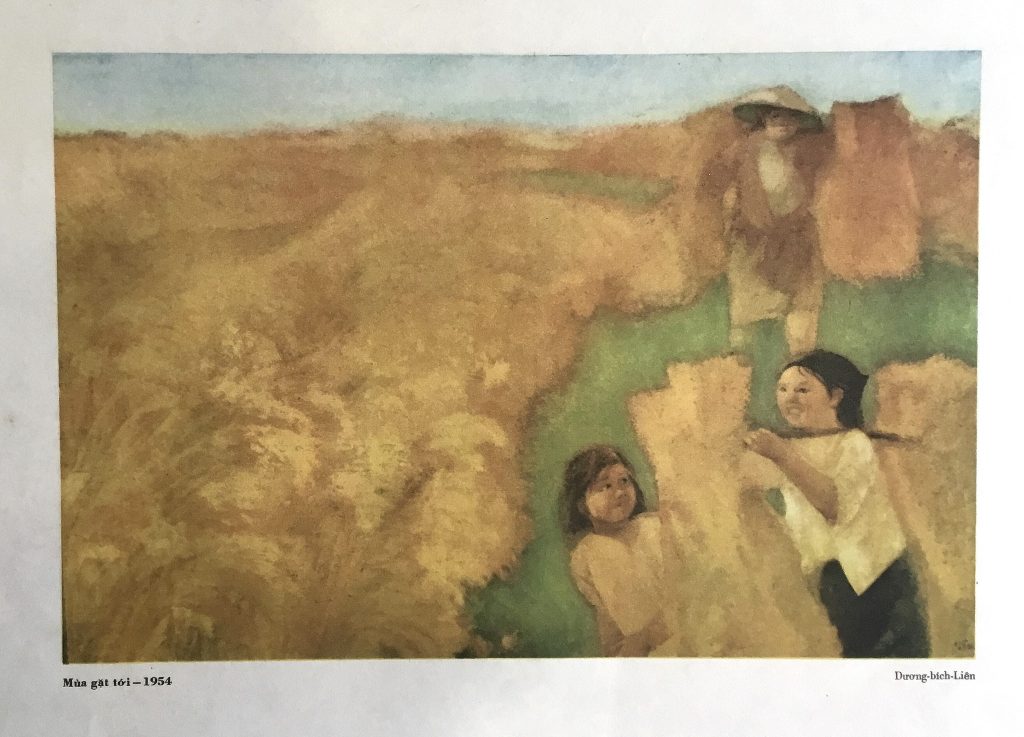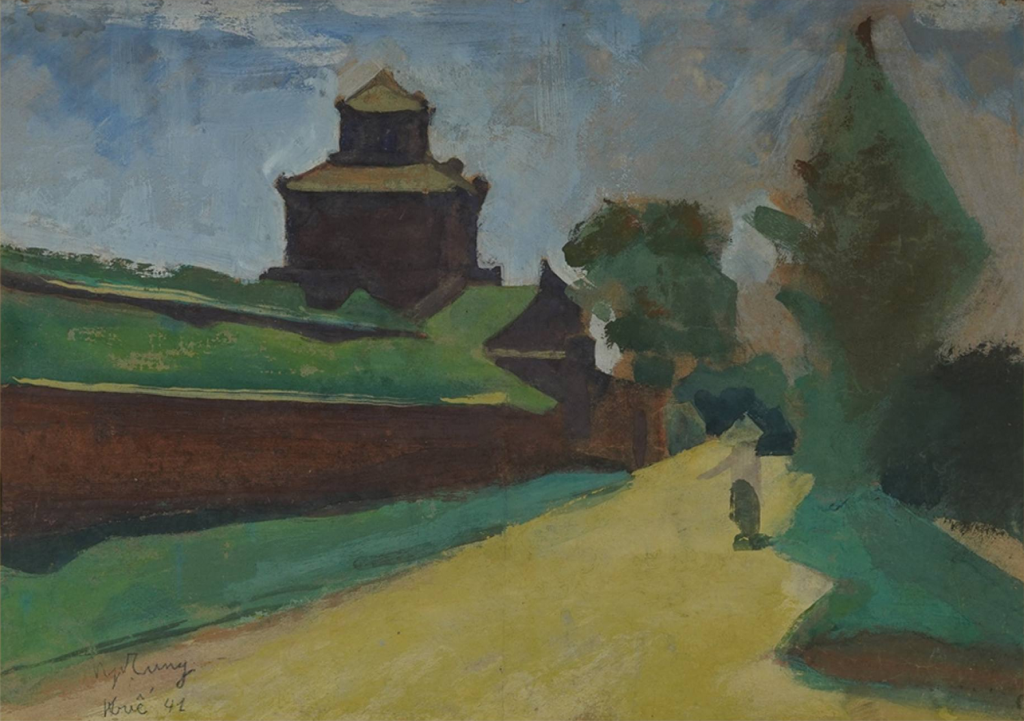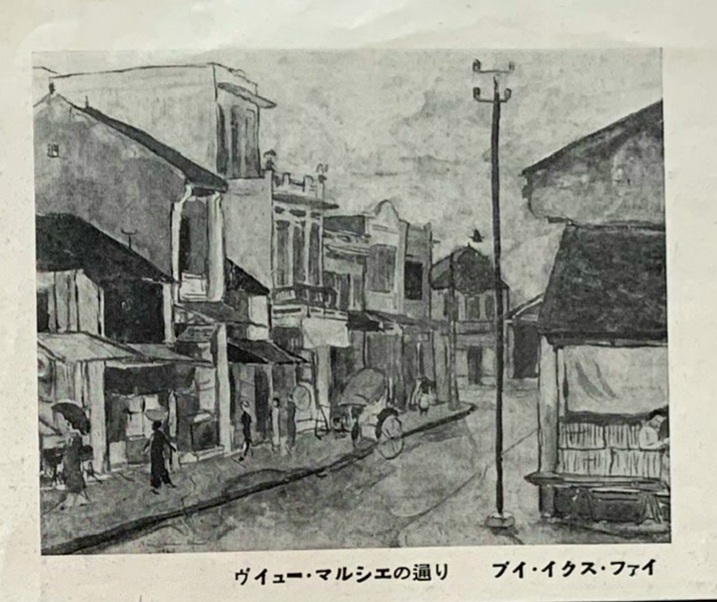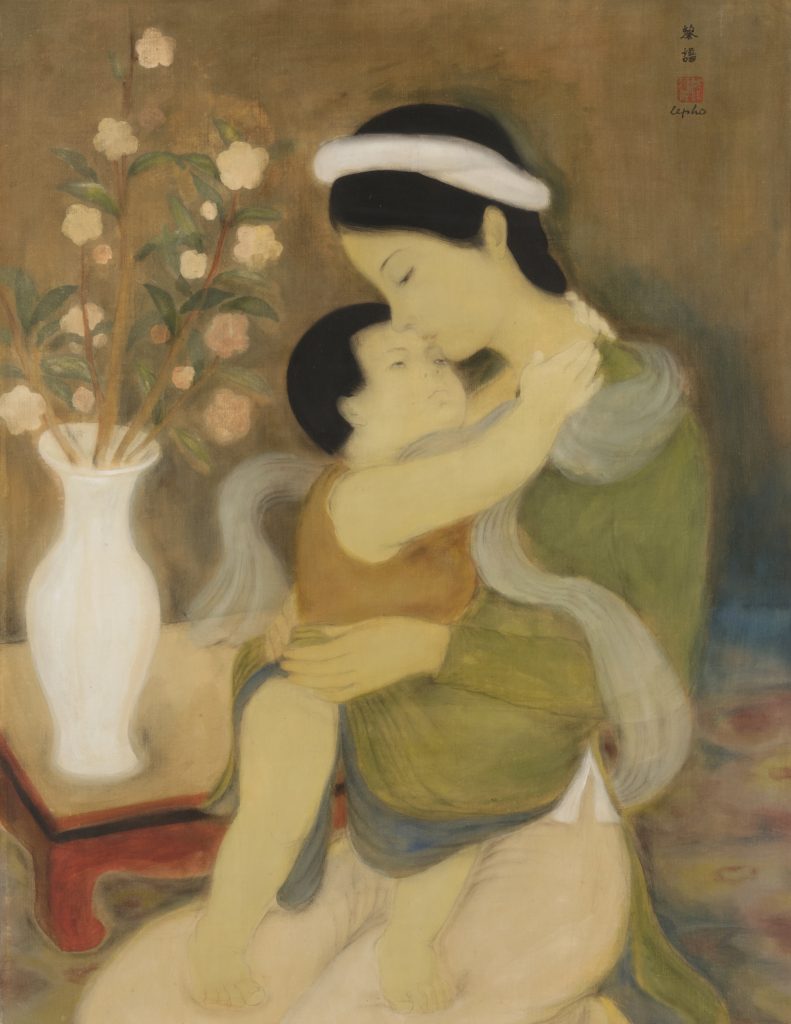In the spring of 1950, the Spring Exhibition room of “Paintings and sculptures about the people’s war” of Inter-Region IV Art studio, presented at the meeting of Lam Sơn Arts Committee (Thanh Hóa).
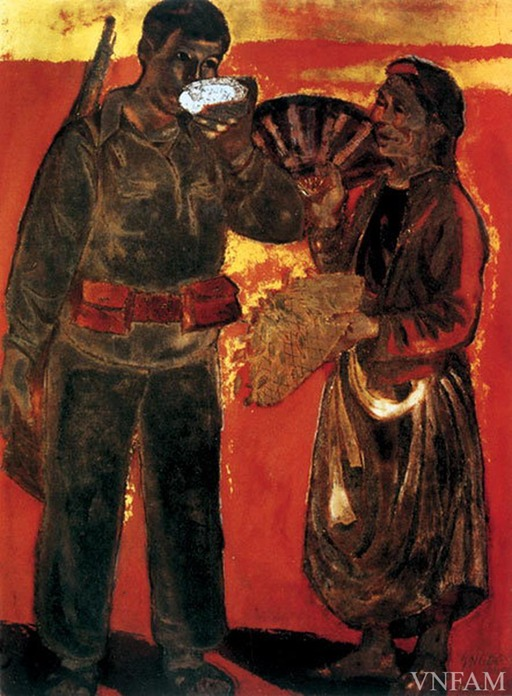
NGUYỄN SỸ NGỌC (1919-1990), The bowl – Affection of the army and the people. 1949. Lacquer. 80 × 60 cm
“PAINTING THAT FOLLOWS REALITY – PAINTING THAT FOLLOWS PEOPLE” is the main theme of the exhibition. There are 63 works of lacquer, oil, lithography, sculpture, drawings and color paintings by 9 artists: Nguyễn Sỹ Ngọc, Nguyễn Văn Tỵ, Nguyễn Đức Nùng, Nguyễn Văn Bình, Phạm Văn Đôn, Nguyễn Thị Kim, Nguyễn Đức Vượng, Phạm Xuân Thi, Trần Thanh Tâm.
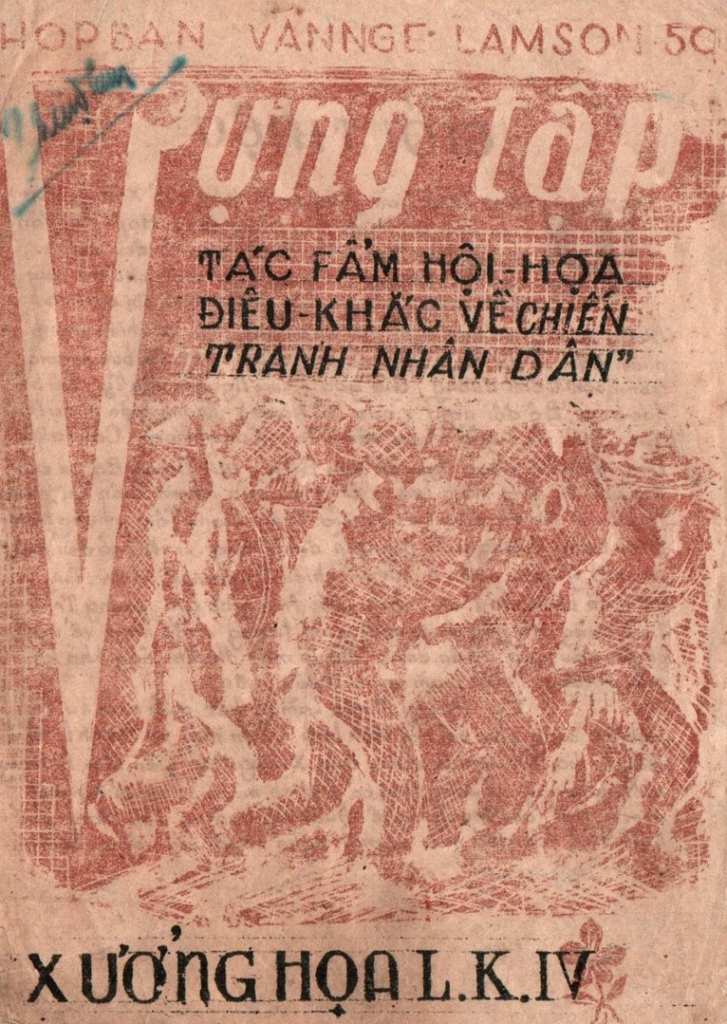
The cover of the catalogue of The exhibition Spring 1950 in the Inter-Region 4 (Thanh Hóa)
In particular, the exhibition brochure had the selling price for each work written. In the list of lacquer works, the painting “The bowl – Affection of the army and the people” (currently belonging to Việt Nam Fine Arts Museum) by artist Sỹ Ngọc is priced at 7 thousand dongs. The most expensive painting in the exhibition is of artist Nguyễn Văn Tỵ, the lacquer work “Militia of Cảnh Dương”, 15 thousand dongs (currently belonging to Việt Nam History Museum).
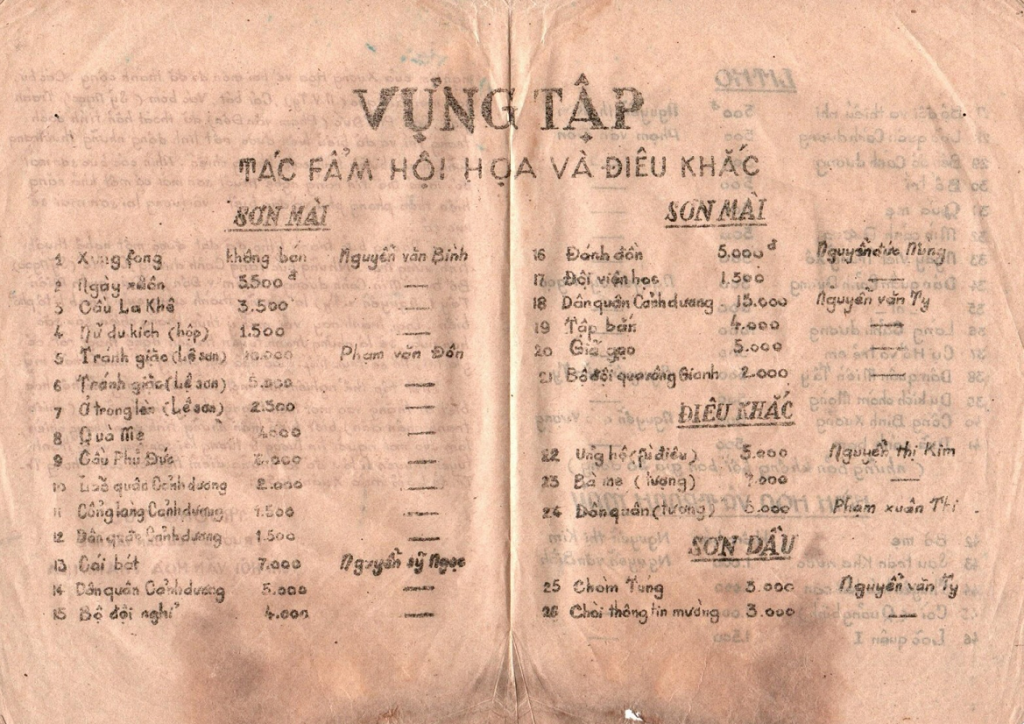
The prices of artworks in the exhibition
So what is the monetary value of 7,000 dongs for the work “The bowl” at that time? Viet Art View turns over the denominations of currencies from 1946-1950 (before the currency change in 1951). It is possible that the prices of paintings in the exhibition were calculated according to a currency called “Central Việt Nam T-bills” including 12 denominations from 1 dong to 1 thousand dongs because this exhibition took place in Inter-zone 4 (in Thanh Hóa). At that time, it included the following provinces: Thanh Hoá, Nghệ An, Hà Tĩnh, Quảng Bình, Quảng Trị, Thừa Thiên Huế.
It is unknown how many Northern dong would be equivalent to 1,000 dongs of central treasury bills at that time that the price of the artwork could be referenced. This requires more in-depth material research on Việt Nam’s monetary history.
In the exhibition catalog, there is an introduction by comrade Trương Tửu* – Head of the Arts Subcommittee of Thanh Hóa Cultural Association: “The exhibition room is the result of elaborate experiments on two art subjects: Lacquer and lithographs. These are the two main experiments of Inter-Region 4 Art Studio this year. The studio intends to elevate lacquer to a very high status in the art of painting and bring popular lithography to the level of a prolific art. The Studio’s experiment on those two subjects was successful. The lacquer paintings “Pounding rice” (N.V.Tỵ), “The bowl”, “Carrying bombs” (Sỹ Ngọc), “Avoiding the enemy”, “Phủ Đức bridge” (Phạm Văn Đôn) have been completely free from decoration and expressed very flexibly the actual situation as well as the emotions of the resistance war. Looking at lacquer paintings, they have a rich and special realism; and the future of lacquer will be brilliant.”
It is a hopeful introduction to the future of Vietnamese lacquer painting right from those difficult revolutionary days. The paintings displayed in that Spring 1950 exhibition have now become rare works with historical value and special artistic value in the history of Vietnamese fine arts.
7 thousand dongs for an important work like “The bowl” of Sỹ Ngọc is just a reference price set by the individual artist himself. After many years, what will the value of the work be? What would happen if calculated according to market price?
A work in addition to its artistic and historical value, if placed in the right position, will become a typical work, even a symbol of painting. To understand that, more in-depth research is needed on the artist’s name, period of creation, historical, cultural and artistic value in the general context of history. Perhaps, after many years, some artists’ names as well as their works will be elevated by future generations when they are appreciated for their true value.
* Writer – Professor Trương Tửu (1913-1999)
Written by Viet Art View
Copyrights belong Viet Art View


